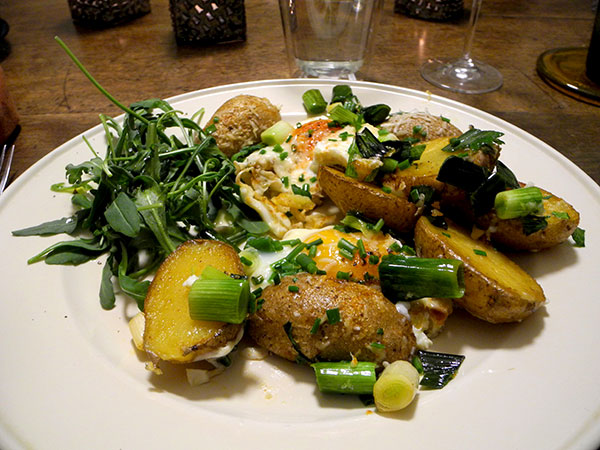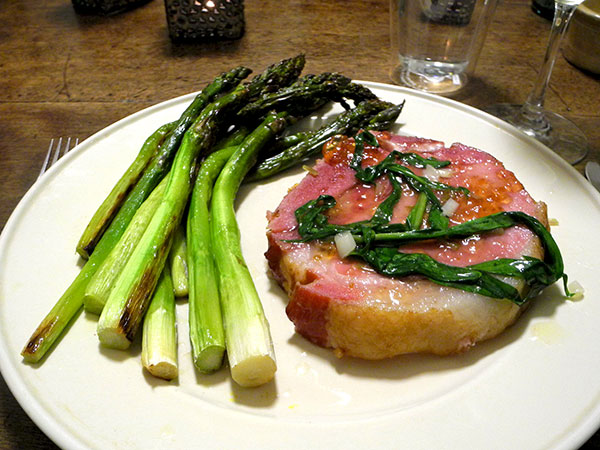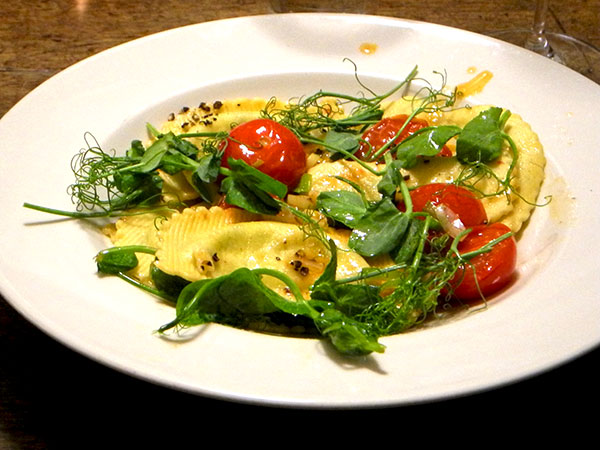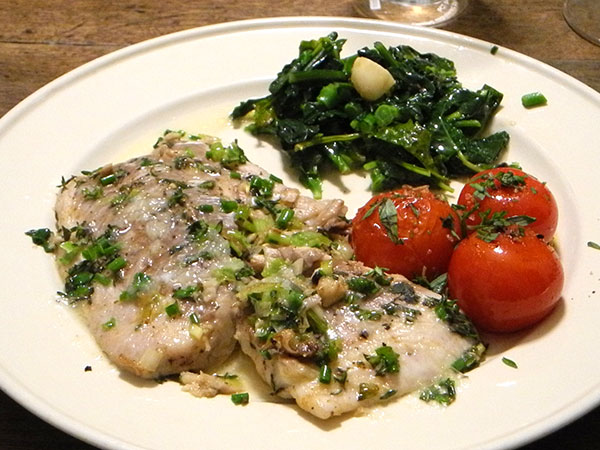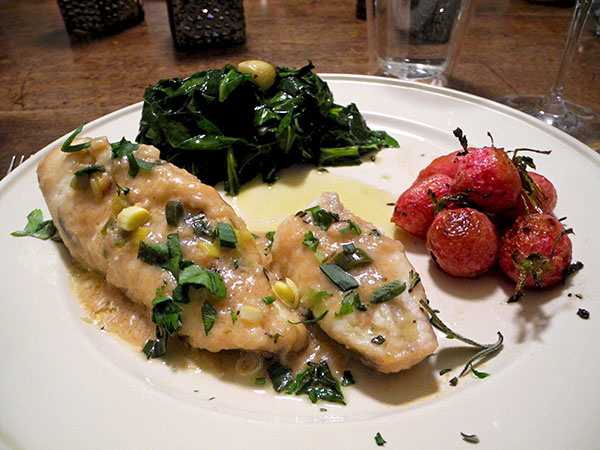Note to self: You can do this again anytime you want to.
I wanted to prepare something simple, and knew I had on hand the makings of something pretty tasty. I didn’t really know what I was going to put together until I began. I no longer remember the details, except that this gallimaufry was a one-pan operation, but they aren’t important anyway; I wouldn’t expect or want this dish to unfold the same way every time.
- I only remember that I started with halved German Butterball potatoes from Mountain Sweet Berry Farm (which had begun to sprout ‘eyes’ inside their brown bag), moved through a sliced stem of spring garlic from Norwich Meadows Farm, and onto some very fresh eggs from Millport Dairy, finishing with scissored chives from Phillips Farm; oh, and there was some real magic in the form of an excellent cayenne from Spices and Tease in Chelsea Market
- the baby arugula was from Migliorelli Farm
- I believe the dish was accompanied by slices of Balthazar’s Multi-Grain boule
- the wine was a simple southern French sparkling rosé, whose name I don’t know remember
